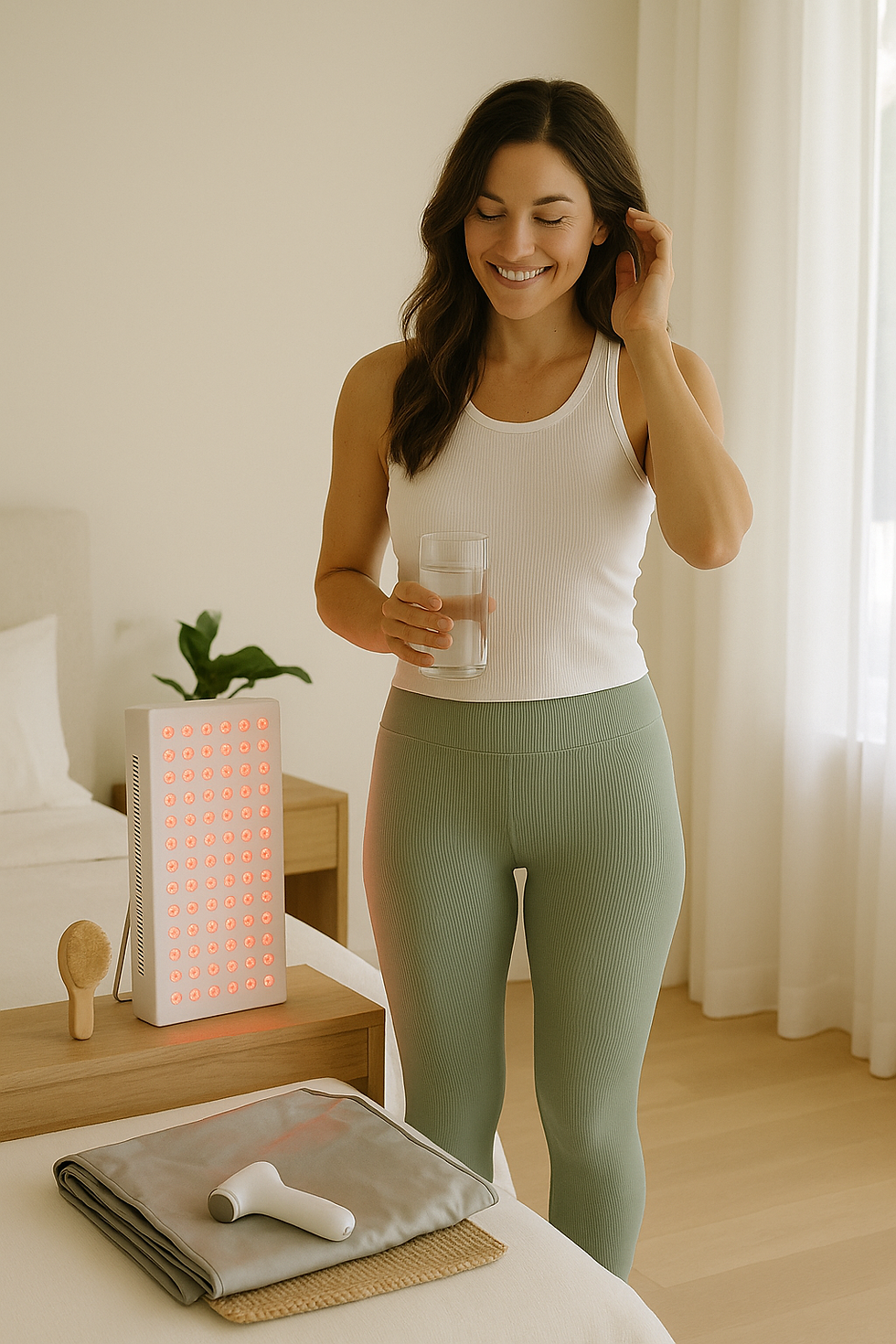Discover the Power of Red Light Therapy
- Casey Zeck

- Jun 29
- 3 min read
Updated: Sep 4
What Is Red Light Therapy?
RLT involves exposing the body to specific wavelengths of red and near-infrared light (typically 630–850 nanometers). These wavelengths penetrate deep into the skin and tissues, stimulating energy production at the cellular level—specifically, in your mitochondria, the powerhouse of your cells.
When your mitochondria function optimally, every system in your body benefits: your skin, brain, immune system, hormones, muscles—even your mood!
Why It’s Making Waves (and Ruffling Feathers)
Let’s be honest—anything that boosts healing, reduces pain, balances hormones, clears skin, and improves energy without a prescription is bound to be labeled "controversial."
But the truth is, red light therapy is backed by over 6,000 peer-reviewed studies. More and more people—from functional health practitioners to elite athletes to everyday individuals—are turning to it not just for healing, but to thrive.
Because it works.
My Red Light Routine
Every morning, before the noise of the world begins, I give myself 10–20 minutes in front of my full-size red light panel from Bon Charge. There are many options on the market. As always, I encourage you to do your own research, but pay attention to wavelengths and EMF output. I chose BC because of its full-body panel, ideal for those looking to support systemic benefits along with its ultra-low EMF levels. It’s grounding, rejuvenating, and balancing.
For targeted use (like helping my toddler through a chest cold or supporting thyroid health), I love the LumeBox handheld unit. It’s compact, good for travel, and powerful enough for spot therapy.
At night, I wind down with my LifePro red light face mask, pairing skincare with quiet stillness.
This isn’t a luxury. It’s a reset button.
Top 5 Red Light Benefits Anyone Can Benefit From
Cellular Energy Production (ATP Boost)
More energy, less fatigue—starting at the source: your cells.
Reduced Inflammation + Pain Relief
Supports joints, muscle recovery, and chronic discomfort.
Hormonal Balance + Thyroid Support
Especially useful in the neck and chest area for autoimmune and metabolic health.
Skin Rejuvenation + Anti-Aging
Reduces wrinkles, stimulates collagen, fades acne scars, and pigmentation.
Improved Sleep + Circadian Rhythm Regulation
Evening red light use helps the body wind down by avoiding blue light exposure and signaling melatonin production.
Cellular Regeneration & Skin Healing
Your skin isn’t just your body’s largest organ—it’s also a mirror of internal health. Red light therapy stimulates fibroblast activity and collagen production, leading to:
Fewer fine lines
Smoother tone + texture
Minimized scars
Faster wound healing
Using my LifePro mask three times a week has noticeably improved my skin’s clarity and glow—without invasive treatments. This is root cause skincare.
Why Red Lights at Night Matter
Swapping harsh, overhead white lights for warm red bulbs in the evening is a powerful way to protect your circadian rhythm and nervous system.
Red light in the home at night:
Promotes melatonin release
Signals the body to wind down
Supports deep, restorative sleep
Reduces overstimulation for kids and adults alike
It’s not just calming. It’s biologically supportive.
Did You Know It’s HSA/FSA Eligible?
Because red light therapy has clinically proven health benefits, many panels and devices—especially those intended for pain relief or skin conditions—are eligible for HSA/FSA reimbursement. It’s a wellness investment your body (and your wallet) can agree on.

The Bottom Line
Red light therapy is one of the most powerful—and underestimated—healing tools available today.
It’s non-invasive. It’s backed by science. And it empowers you to reclaim your health, one session at a time.
Whether you’re managing stress, chasing better sleep, healing your skin, or simply trying to show up with more energy each day—this is a tool worth integrating into your daily rhythm. Because when your body is bathed in light—it remembers how to heal.
Scientific Studies & References
Hamblin MR. Mechanisms and applications of the anti-inflammatory effects of photo biomodulation. AIMS Biophys. 2017.
Gupta A, Dai T, Hamblin MR. Effect of red and near-infrared wavelengths on skin rejuvenation. Photochem Photobiol. 2014.
Leal Junior EC, Lopes-Martins RA, Bjordal JM. Clinical applications of low-level laser therapy (LLLT) in sports injuries. Br J Sports Med. 2010.
Barolet D, Boucher A. Prophylactic low-level light therapy for preventing photodamage. J Investig Dermatol Symp Proc. 2013.
Huang YY, Chen AC, Carroll JD, Hamblin MR. Biphasic dose response in low level light therapy. Dose Response. 2009.




Comments